
LINCOLN HEIGHTS
Lincoln Heights one of the main neighborhoods of Los Angeles‘s Eastside. Across the Los Angeles River, it’s neighbored by Downtown‘s Chinatown, North Industrial District (Dog Town), Civic Support, and Mideast Los Angeles‘s Elysian Park and Elysian Valley to the west and northwest, respectively. It’s neighbored the Northeast Los Angeles‘s Cypress Park and Montecito Heights to the north; and fellow Eastside neighborhoods Boyle Heights, El Sereno, and Happy Valley, to the south, east, and north, respectively.
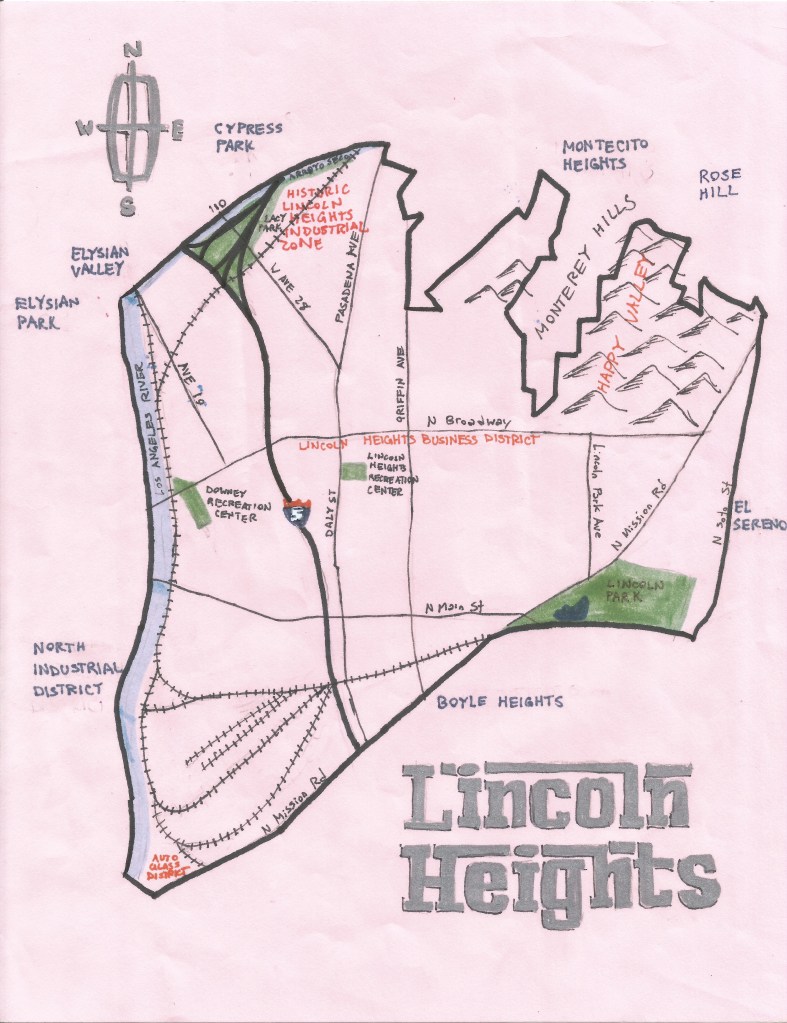
For this episode, I was accompanied by Genevieve Liang, making her second appearance after her season 6 debut with “Pasadena – The Crown City of Roses.”
HISTORY OF LINCOLN PARK
The first humans in what’s now Los Angeles were the Paleoamerican ancestors of the Chumash, who arrived here at least 13,000 years ago. Around 3,500 years ago, the Tongva arrived from the Sonoran Desert to the east. It was conquered by Spain, became part of Mexico, and was then conquered by the US in 1848. Los Angeles was incorporated in 1850.
In 1863 there was an outbreak of smallpox. Then city health inspector and county coroner Dr. John S. Griffin, was offered 2,000 acres of land at the reduced price of 50 cents an acre instead of his normal $3,000 salary by the cash-strapped city. In 1874, the Virginian doctor and his nephew, Hancock Johnston, began selling lots in what was then known as East Los Angeles to Angelenos who were among the town’s first suburbanites.
The Albion Cottages were built in 1875 (the Milagro Market was added later) to serve workers on the Southern Pacific Railroad.
EARLY LINCOLN HEIGHTS
Along with Angeleno Heights, Bunker Hill, and Boyle Heights; Lincoln Heights was one of Los Angeles’s first suburbs. In its earliest years most of the residents were English and Irish Americans, who nicknamed the budding community “The Garden Territory.” The “downtown” was laid out along Broadway, which begins there and ultimately runs 28 kilometers south, finally terminating in Gardena.
EAST LOS ANGELES PARK -> LINCOLN PARK
A portion purchased by the Southern Pacific Railroad Company was left undeveloped and instead set aside as a park in 1881. It was first named East Los Angeles Park and subsequently re-named Eastlake Park in 1901 as an Eastside counterpart to Westlake (now known as MacArthur Park). It quickly became one of the city’s major attractions and, due to a petition, was renamed Lincoln Park in 1917. It was at the park that Charlie Chaplin filmed A Woman (1915), Harold Lloyd filmed Haunted Spooks (1920), and in 1921, Laurel and Hardy appeared, not yet as a team, in The Lucky Dog, their first cinematic appearance together.
CHURCH OF THE EPIPHANY
The Church of the Epiphany was built in 1883. In 1913, it was expanded and a large window designed by Tiffany Studios was installed. Decades later, in the 1960s and ’70s, it was an important center in the Chicano Rights movement. The Brown Berets routinely met there and the newspaper, La Raza, had its offices there.
GERMAN IMMIGRATION — LINCOLN PARK IN THE 1890s
The 1890s saw an influx of immigrants from Germany, many of whom worked as bakers. One such company, Mrs. Cubbinson’s, still manufactures Cubbison’s Croutons and other products today. The East Los Angeles Church of the Brethren was built on Broadway and opened its doors to mostly German American worshippers in 1896. As Lincoln Heights filled up with more immigrants, some of the wealthy citizens of the neighborhood began to decamp to Northeast Los Angeles and Hollywood communities.
Historic homes of the era (not pictured) include: Stoltenberg Residence (2901-2907 Manitou Ave.) built in 1890, Foyen Residence (2242 Workman St.) built in 1895, Clark-Doody Residence (2139-2141 Parkside Ave.) built in 1896, Schliebitz Residence (2063 Griffin Ave.) built in 1903, Binford Residence (2200-2212 Eastlake Ave. & 3201 Baldwin St.), Nicol Residence (2309 Hancock St.), Todd Residence (2808 Manitou Ave.), Olin Residence (2622-2624 Mozart St.), and Girard-Vai Residence (2113-2113½ Parkside Ave.)
LINCOLN HEIGHTS IN THE 20TH CENTURY
1900s
Around the turn of the 20th Century, the area around Lincoln Heights developed in an increasingly industrial direction. As land values decreased, an influx of Italian Americans arrived from across the river, where a Little Italy had been established in the 1880s. Many of the Italians were involved in wine-making, which had first been established by French immigrants across the river in the 1830s. Wine-making would later peak with some 20 wineries operating in the area.
One newly-arrived Sicilian-American family in Lincoln Heights was the Capras, who bought a home at 240 South Avenue 18 in 1904. Their son, Francesco Rosario, would late pursue a career as a film director, debuting with 1922’s The Ballad of Fisher’s Boarding House. Calling himself Frank Russell Capra, he later achieved fame with It Happened One Night, Mr. Deeds Goes to Town, Lost Horizon, Mr. Smith Goes to Washington, Arsenic and Old Lace, and especially It’s a Wonderful Life.
EDISON ELECTRIC COMPANY
The John B. Parkinson-designed Los Angeles No. 3 Steam Power Plant was built for the Edison Electric Company in 1903. The site later became a Pabst Blue Ribbon Brewery. It’s somewhat fitting that the place that once brewed the swill enjoyed ironically by hipsters is now a live-and-work artists’ colony. The space itself is impressive but isn’t without controversy. Unneighborly efforts have been made by some to distance the colony from the Lincoln Heights neighborhood and art scene and instead forge an association with the Downtown Arts District, even though they’re separated from one another by a river and several kilometers.
THE LOS ANGELES OSTRICH AND ALLIGATOR FARMS
Following the lead of America‘s first ostrich farm, Cawston Ostrich Farm, which opened in not-too-distant South Pasadena in 1886; the Los Angeles Ostrich Farm opened in Lincoln Heights in 1906. Located opposite Eastlake Park, the farms visitors gawked and posed with the large birds and rode in ostrich-drawn carriages. Ostrich parks were quite the rage back then. Rancho Los Feliz (now Griffith Park) was home to the Ostrich Farm and the terminus of the Ostrich Farm Railroad.
Next door to the Ostrich Farm and operated by the same owners was the Los Angeles Alligator Farm, which opened in 1907. As with the ostrich farm, vistors gawked and posed with the large crocodilians… and yes, were pulled along in alligator-drawn carts! Both existed until 1953, at which point the alligators relocated to Buena Park. I’m not sure what happened to the ostriches — leather and steaks?
HISTORIC DOWNTOWN LINCOLN HEIGHTS
Lincoln Heights’s Neher & Skiling-designed Federal Bank Building was built in 1908 and is now (possibly) the nation’s only Italian Renassance El Pollo Loco. The Broadway Street Clock was erected in 1910. Frieden’s Department Store is possibly the oldest family-owned department store in Los Angeles.
The Lincoln Heights Branch Library was built in 1916, inspired by Michelangelo‘s design for Rome‘s Villa Guilla, and is the second oldest library in Los Angeles.
The Art Deco-style Light and Power Building was built in the 1930s.
SELIG MOVIE STUDIO AND ZOO
In 1913, pioneering West Coast film director William Selig acquired 32 acres of land in Lincoln Heights, two years after his partner Francis Boggs was murdered by their janitor at their film studio in Edendale. The old studio was sold to William Fox, founder of Fox Film. At his new property, Selig erected a zoo for the use in his jungle serials at the former site of a previous tourist attraction, the Indian Village (which opened around 1909). The Lincoln Heights Carousel was added in 1914. It was designated an historic monument in 1976 but was gutted by fire and demolished the same year. In 1925 the zoo was sold and re-named Luna Park Zoo. Soon afterward it closed and the animals were sold to Los Angeles, which had opened a zoo in 1912.
LOS ANGELES COUNTY HOSPITAL
Construction of Los Angeles County Hospital (formerly located on Marengo Street) began in 1913. Today the old administration building still stands and is the home to the Los Angeles County Coroner’s office. When the hospital still stood it served as a filming location for Charlie Chaplin’s Police (1916), Hank Mann’s The Janitor (1919), Stan Laurel’s Detained (1924), and Laurel & Hardy’s The Hoose-Gow (1929).
THE SAN ANTONIO WINERY
The most famous winery in Lincoln Heights is the San Antonio Winery, established in 1917 by Santo Cambianica, an immigrant from Lombardy. After Prohibition was enacted in 1920, other wineries sold “wine bricks,” legal grape concentrates that helped fuel the bootlegging industry as well as alcohol with supposed health benefits like North Cucamonga Winery‘s “Padre’s Wine Elixir Tonic” and “Padre’s Bitter Wine.” Lincoln Heights and Little Italy were notorious for their bootlegging and Avenue 19 was nicknamed “Shotgun Alley.”
The San Antonio Winery, on the other hand, survived by producing communion wine. In 1966, it was listed as a Los Angeles Historic-Cultural Monument. Nowadays the winery relies on grapes grown in in Monterey, Napa Valley, and elsewhere.
1920s – LITTLE SICILY
At the turn of the century, large numbers of Mexican Americans began to make their homes in Lincoln Heights, many having relocated from other Eastside neighborhoods like Brooklyn Heights. Boyle Heights, and East Los Angeles. Still more arrived as refugees from the Mexican Revolution. However, through the 1920s the predominant ethnic group continued to be Italian Americans and some nicknamed Lincoln Heights “Little Sicily,” a cross river neighbor to Los Angeles’s Little Italy neighborhood (now the site of Chinatown). The combined Italian population of Little Italy and Little Sicily reached around 8,000 people at its height.
THE WINEVILLE CHICKEN COOP MURDERS
In 1928, a series of kidnappings and murders of young boys rocked Los Angeles and the Inland Empire. Then nine-year-old Walter Collins disappeared from his Lincoln Heights home (located at 217 North Ave 23) on 10 March 1928. A twelve-year-old from Iowa, Arthur Hutchins Jr, pretended to be Collins, primarily motivated by his desire to come to Los Angeles to meet cowboy star, Tom Mix. The events were retold (with the names changed to protect the innocent) in the 1951 Dragnet radio series episode, “The Big Imposter” and a 1952 Television episode of the same name. The events were also depicted in 2008’s Clint Eastwood film, The Changeling. Eventually, Canadian serial killer Gordon Northcott was caught, confessed to the killing (and several others – although he was suspected of more), and hanged.
LINCOLN HEIGHTS IN THE 1940s
After the conclusion of World War II, many of Lincoln Heights’s established Italian American and Mexican American residents moved east into the suburban San Gabriel Valley, particularly towns like Alhambra, Rosemead, San Gabriel, and Temple City. Those that stayed behind were mostly less-wealthy and as a result Lincoln Heights grew increasingly working class.
GANGS OF LINCOLN HEIGHTS
Accounts of when gangs first appeared in Lincoln Heights vary, with dates routinely being pushed back decades further and further and are hard to verify. By some accounts, East Side Clover and Varrio Lincoln Heights date back to the first decade of the 20th century. Clicks include Parkside Locos, Calle Sichel Locos, Thomas Street, 28th Ave/Calle 28, and Workman Street. Other active Lincoln Heights gangs include East Lake Locos and Happy Valley Rifa. Whenever they formed, it’s generally accepted that most were active by the 1940s.
LINCOLN PARK STADIUM
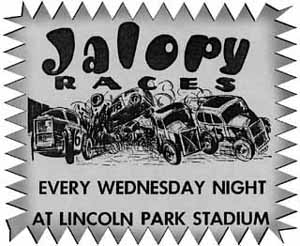

I couldn’t find the exact dates of Lincoln Park Stadium‘s operation but it at least existed between 1946 and 1952 (by which point it was renamed “The New Lincoln Speedway“), when it hosted both midget car and jalopy races. It was located on the grounds of the former zoo, which closed in 1933 after damaging floods.
LINCOLN HEIGHTS JAIL
The Lincoln Heights Jail that still stands opened in 1931. As early as the 1850s there had been jail buildings there. Charlie Chaplin’s Police (1916), Harold Lloyd’s Take a Chance (1918), and Laurel & Hardy’s The Second Hundred Years (1927) were all filmed at earlier incarnations of the jail.
One such criminal, Nancy Valverde, was a Lincoln Heights barber who, due to her short hair and habit of wearing pants, was routinely dragged in on charges of “masquerading.”
In 1951, a group of young Mexican American men (Danny and Elias Rodela, Raymond Marquez, Manuel Hernandez, and Eddie Nora) were picked up at the Showboat Bar in Frogtown, dragged back to the jail, and severely beaten by a large group of drunk cops in an incident that came to be known “Bloody Christmas” and inspired the book and film LA Confidential. The cops were responding to a call about underage drinking. All of the victims were of legal age and produced valid ID. Unfortunately, LAPD had a tradition of getting rip-roaring drunk on Christmas and the victims suffered paralysis, ruptured and punctured organs, broken bones and in one case required three blood transfusions.
The jail was closed in 1959 but some businesses have operated in parts of it. The Bilingual Foundation of the Arts began operating out of it in 1979. Later, portions of Nightmare on Elm Street and Night Train (as well as the Blink-182 video “Feeling This”) were filmed there. In 1993 it became the home of the no longer-extant Aztlan Cultural Arts Foundation. It was closed to filming in 2010 but parts were reopened in 2012.
DANNY SANTIAGO
Daniel Lewis James was an Irish American former Communist who grew up in Kansas City, Missouri. Though having left the party in ’48, he was blacklisted in 1951 after being called before HUAC. He and his wife moved to Lincoln Heights where they became active in the formation of theater groups and youth activities. He died in 1988. For decades, beginning in the 1950s and employing the pseudonym “Danny Santiago,” he wrote Eastside fiction that was widely praised for it’s authenticity. 1983’s Famous All Over Town, won the prestigious 1984 Rosenthal Award for literary achievement. After he failed to claim his $5,000 reward, James revealed the truth.
THE 5 FREEWAY
In 1953, the California Highway Commission proposed building the 5 Freeway through the Eastside. Not surprisingly, Eastsiders reacted with resistance. Then-city council member Edward R. Roybal chaired the Boyle-Hollenback Anti-Golden State Freeway Commission but in 1956, the freeway cut through, displacing families and encouraging the accelerating departure of many of their neighbors. By the 1960s, the middle class had departed, leaving Lincoln Heights a thoroughly working class and mostly Latino, barrio, albeit one with a significant Chinese American minority, due to the neighborhood’s location across the river from Chinatown.
LACY STREET STUDIOS
Lacy Street Studios occupies a former textile mill built in 1885 that became a shooting location in 1976. Nowadays it’s a frequent stand-in for New York City and other 19th century metropolises. One of the building’s claims to fame is that the television show Cagney and Lacey was shot here, as were the series Alien Nation, Mafiosa, and Scream Play.
The films The Addams Family, Ballistic, Beethoven, Cage II, Cobb, Dark Wolf, Dead Presidents, Don’t Look Up, A Gothic Tale, The Girl from the Naked Eye, Gridlock’d, Hollywood Kills, Jade, LA Confidential, Little *ucker, Lord of Illusions, My Family, Out for Justice, Radio Free Albemuth, Saw, Sparks, Things You Can Tell Just by Looking at Her, Torture Room, Tumbleweeds, Twin Falls Idaho, and Winning London were also filmed there in part or in whole.
On the day of our visit, Genevieve and I walked into the sprawling, 88,000 square foot property and didn’t see anyone for some for a bit — turns out there are only five employees. After we were asked if we were scouting for locations, we were directed to an office. Operations Manager Tony Churchill kindly took time out of his day to talk with us about the history of the building, and the company. He also told us about his days as Tyne Daly back in the Cagney & Lacy days. He also showed us regaled us with humorous tales about his days in the 1970s funk band New Birth, whose roots go back to Kentucky‘s The Nite-Liters, which he co-founded in 1963.
LINCOLN HEIGHTS TODAY
Nowadays the population of Lincoln Heights is roughly 71% Latino of any race (mostly Mexican), 25% Asian (largely Hoa Chinese) and 3% white. Subdistricts include the Auto Glass District, Clover Heights, The Hills, and Lincoln Heights Estates.
LINCOLN HEIGHTS IN TELEVISION AND FILM
In addition to the aforementioned film and television series Lincoln Heights has appeared in many others. For an in depth feature on silent films shot in Lincoln Heights, click here.
OTHER HISTORIC BUILDINGS
Lincoln Heights, being as old as it is, is home to numerous, beautiful old buildings including many private residences. It’s also home to the Sacred Heart Church (2210 Sichel St) and the Albion Street School – designed by T. Beverly Keim Jr. (322 South Avenue 18) and built in 1924 and 1936.
LINCOLN HEIGHTS EATS
Lincoln Heights is home to numerous highly-regarded restaurants, especially Mexican ones. El Huarachito is rightfully famous for their breakfasts. Lanza Brothers Market is one of the few culinary vestiges of the neighborhood’s Italian past. On the day of our visit we ate at LA Bakery which I thought was decent.
Other local establishments include Armex Kabob Restaurant, Ave 26 Taco Stand, Boda Restaurant, Cafe in the Heights, Cake Girl, Carnitas Michoacan, Champion Donuts, Chinatown Express, Corn Man, Dino’s Burgers, Honey Donuts, Kacin’s Tulip Cafe, King Taco, La Estrella Mexican Food, La Morenita Restaurant, La Naranja Taqueria Restaurant, La Playita, Lencho’s Mexican Restaurant, Llamarada, Los Paisas Taco Truck, Los Tres Cochinitos Restaurant, Maracas Cafe, Maya’s Restaurant, Mom’s Tamales, Mr Steve Donuts, Natural Fruit Los Reyes, Pablo’s Fruit Stand, Palace Bakery, Rancho Meat Market, Raspados Nayarit, Tacos Chapalita, Takoyaki Tanota Truck, Troy’s Burgers No 10, and Wendy’s Tortas.
LINCOLN HEIGHTS ART & CULTURE
Lincoln Heights has a vibrant art scene. There are purely artistic and commercial murals adorning many building walls. One of the best known is Chicano Time Trip, painted by Los Dos Streetscapers (Wayne Healy and David Botello) in 1977. The Brewery includes the I-5 Gallery, the LA Artcore Brewery Annex, Arts Refoundry, Bruce Gray Gallery, Mia Gallery, RAID Projects, and Salerno Michael. It also hosts the Brewery Artwalk.
In Lincoln Park, the Plaza de la Raza Cultural Center for Arts and Education has served the community since 1970. Also in the park is Julia Bracken Wendt‘s sculpture, The Lincoln Lawyer, made in 1926, and David P. Edstrom‘s statue of Florence Nightingale, done in 1937.
PARQUE DE MEXICO
Nearby, at the Parque de Mexico, there are even more sculptures of figures associated with Mexican history, including Efren de los Rios‘s El Cura Don Miguel Hidalgo y Costilla (1938), Ernesto E. Tamariz‘s Lazaro Cardenas del Rio (1970), an anonymous Benito Juarez (1976), an anonymous Pancho Villa (around 1980), Ignacio Asunsolo‘s Emiliano Zapata (1980), Jose Maria Morelos y Pavon‘s Julian Martinez (1980)…
…Victor Gutierrez‘s Venustiano Carranza (1980), Francisco Zuniga‘s General Ignacio Zaragoza (1981), an anonymous Emperor Cuauhtemoc (1981), Humberto Peraza‘s Agustin Lara (1984), Ayda’s J. Jesus‘s Gonzales Ortega (1987), Francisco Zuniga‘s Ramon Lopez Velarde (1988), Velarco‘s Dona Josefa Ortiz de Dominguez (1994), and an anonymous Guadalupe Victoria (1997).
Other cultural institutions include Lincoln Heights the Pieter Performance Space (since 2009) and HM157. The neighborhood also puts on an annual Christmas (or alternately “Community”) Parade. Another well-known local venue is The Airliner (which used put on the popular Low End Theory), a bar which opened in 1946 as the Airliner Steakhouse & Cocktail Lounge.
KWAN YING VIETNAMESE BUDDHIST ASSOCIATION/CHUA QUAN ÂM
Figuring out what the temple on Broadway is known is is surprisingly challenging. The sign on the building next door says America Vietnam-Chinese Friendship Association. Other directories list the place’s name as Kwan Ying Vietnamese Buddhist Association. Some of the confusion can probably be chalked up to the use of Vietnamese, Chinese, and romanized Chinese. The sign at the entrance says, “Chùa Quan Âm,” Vietnamese for Quan Âm Pagoda.
Quan Âm is one of the bodhisattva venerated in East Asian Buddhism. Look up “Chùa Quan Âm” and the nearest result is the temple of that name in Little Saigon (specifically Garden Grove. I’ve actually been the that temple, incidentally). Perhaps it’s changed its name even though I believe it only opened in 2003. In front of the temple, I once encountered a guy selling barrel cacti, who assured me that they were the best I’d ever see. They looked fine. There’s also the Ultra Violet Social Club and The Office Club. One place that I’ve long been curious about but never seen the inside is the bunker-like California Nigth [sic] Club, the sign on which is constantly shedding more and more letters.
Support Eric Brightwell on Patreon



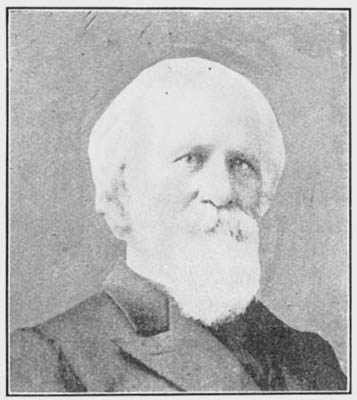
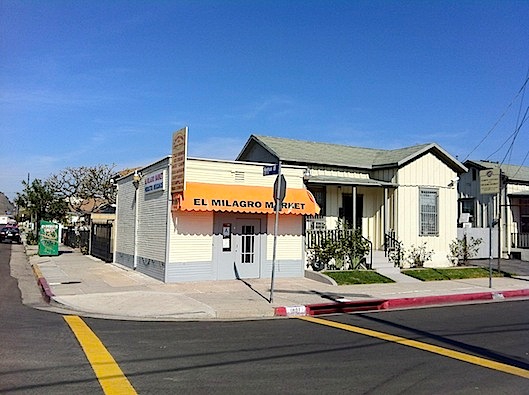


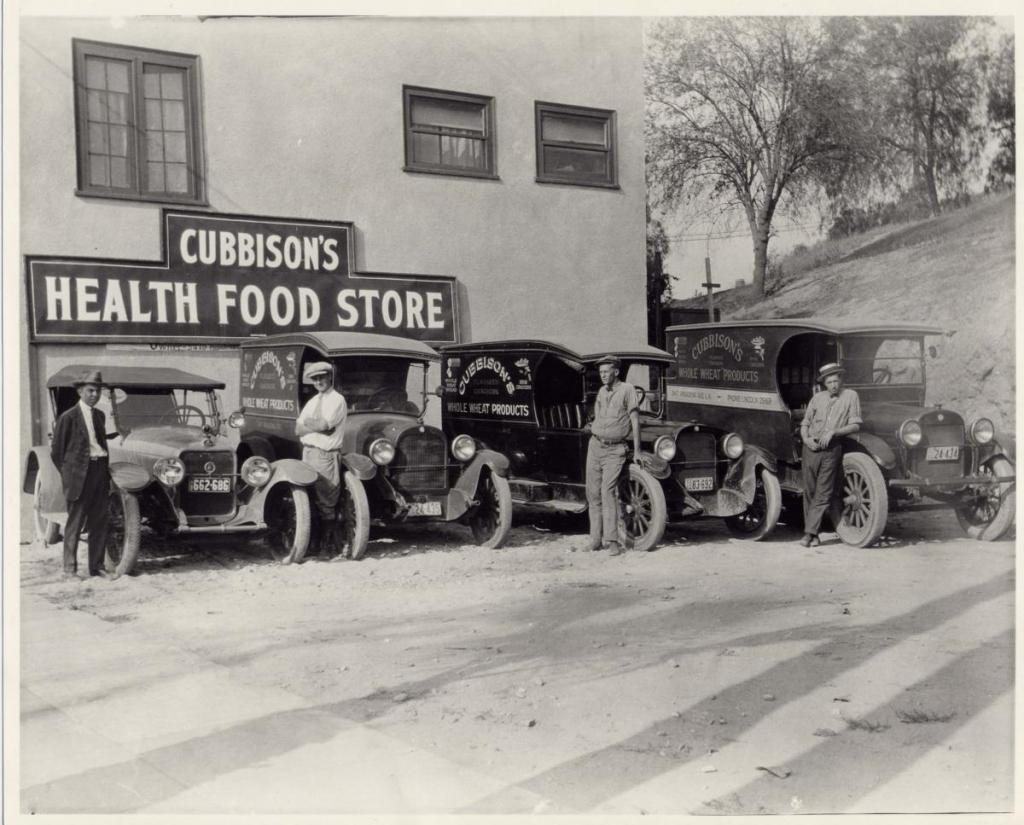



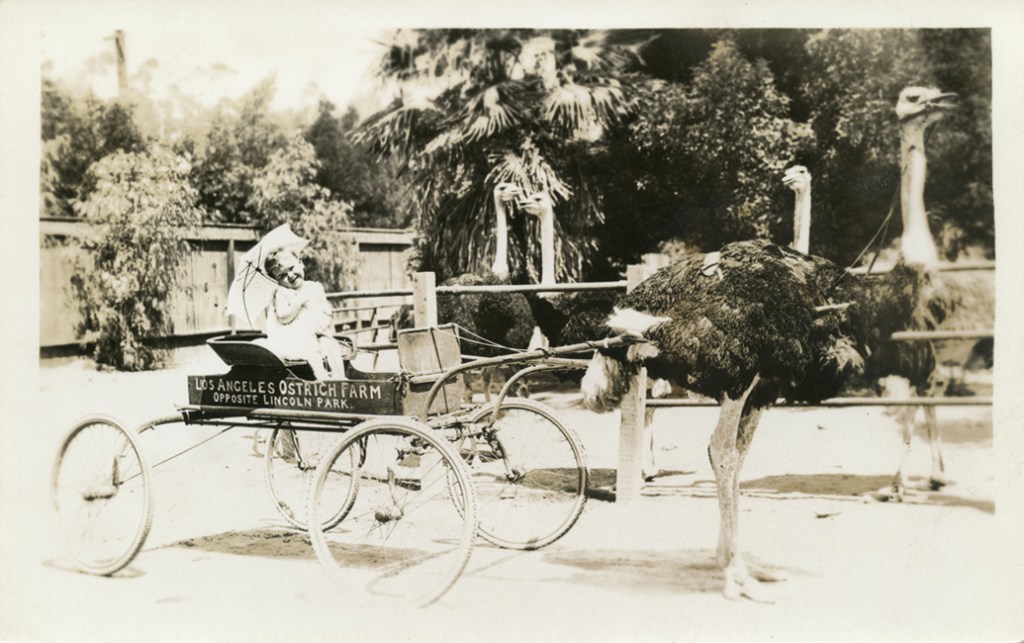

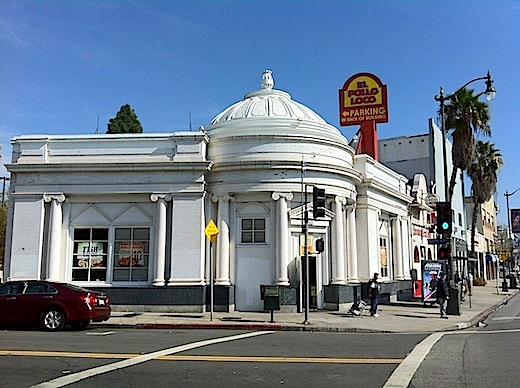

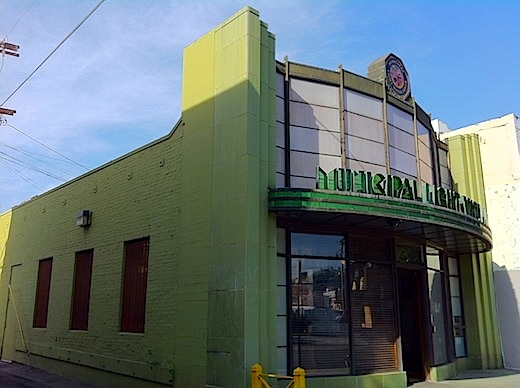
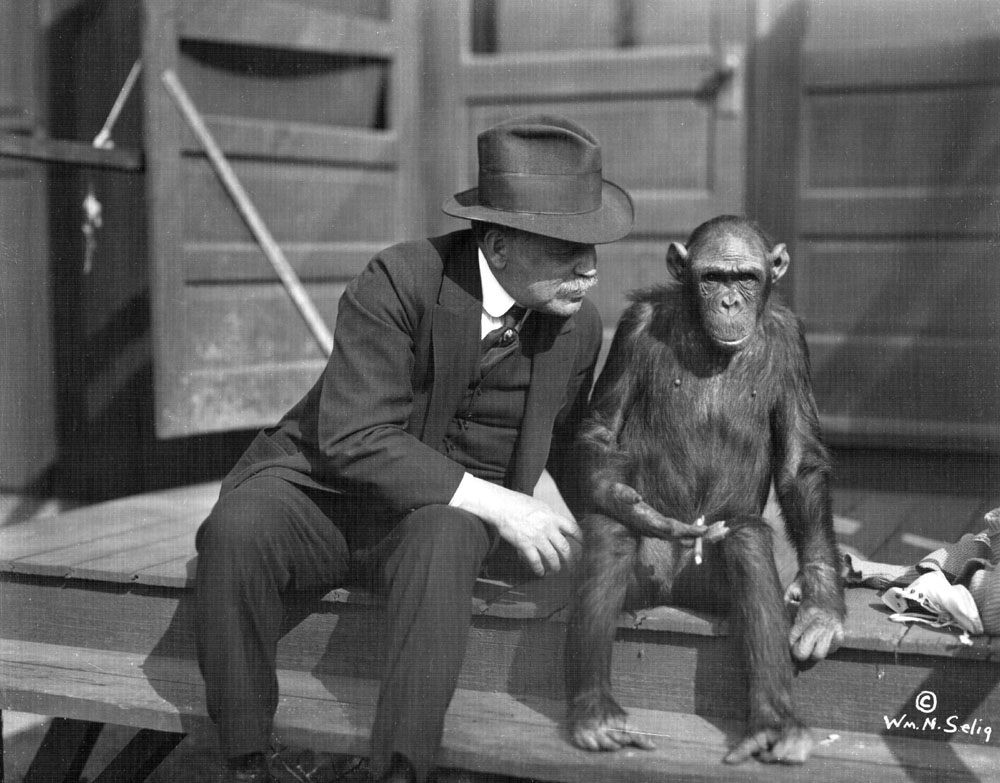
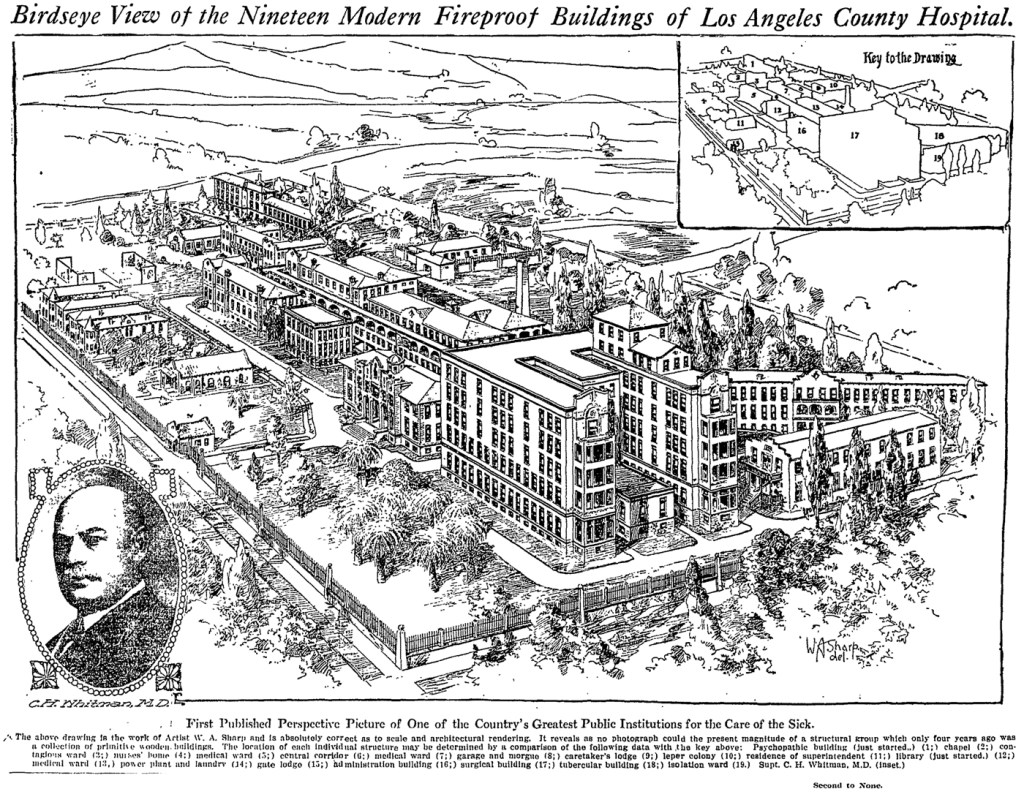
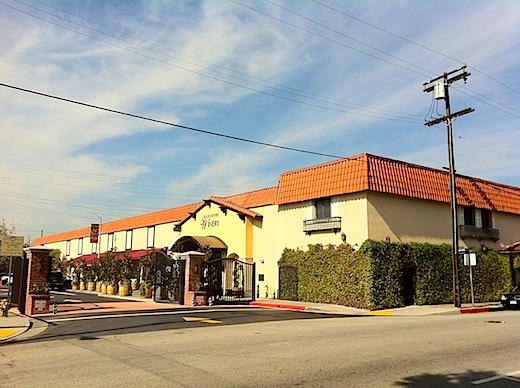
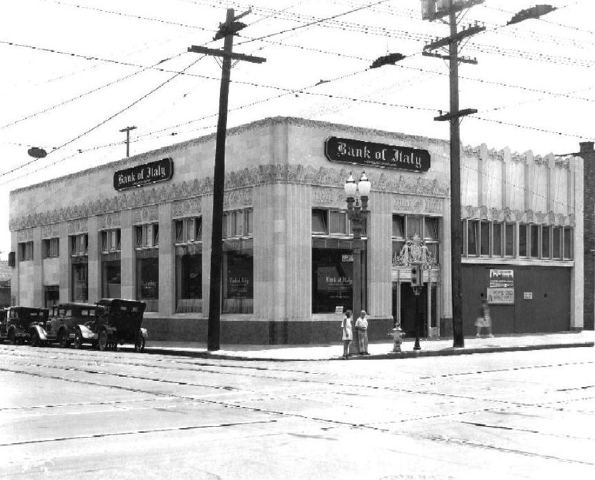



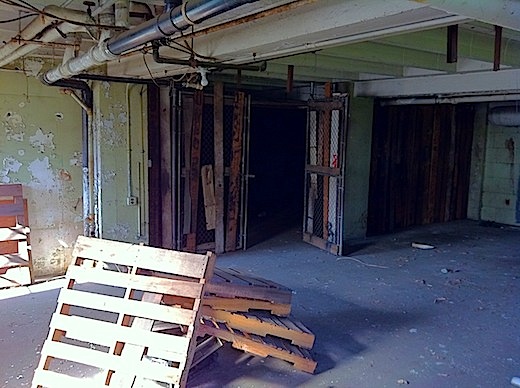
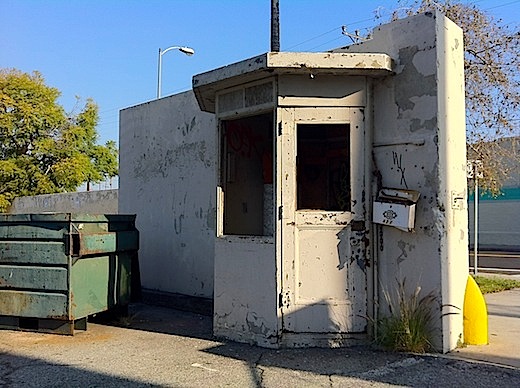

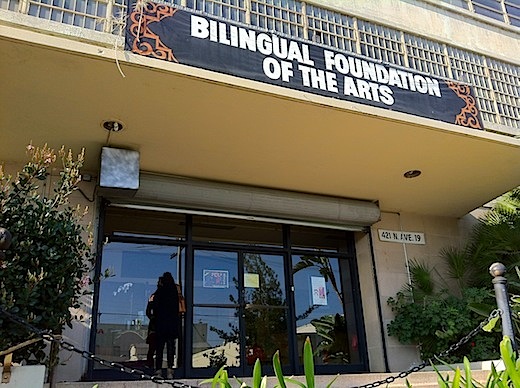

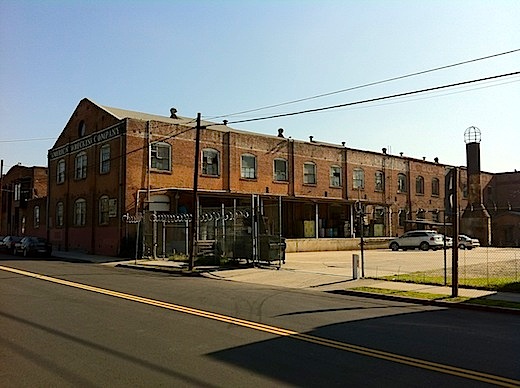



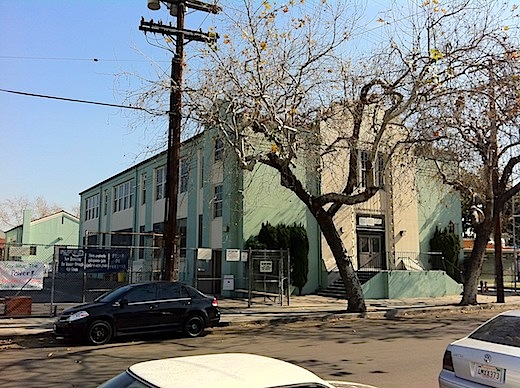
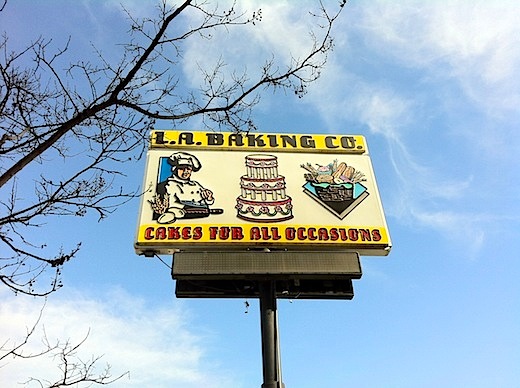
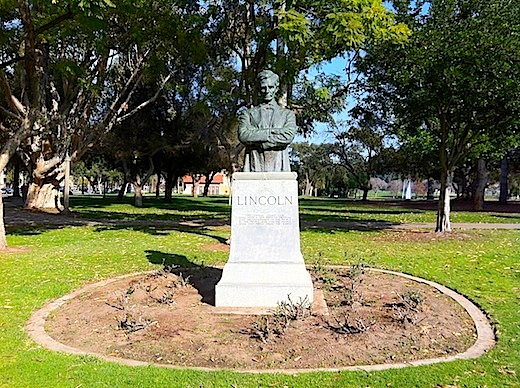





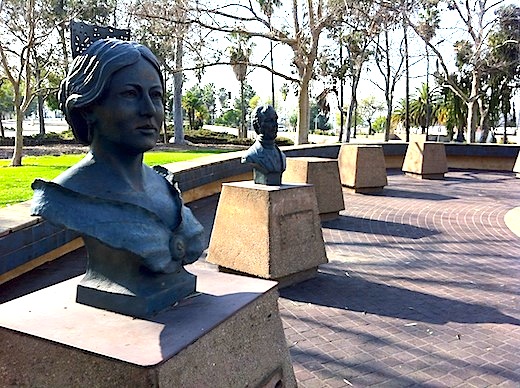
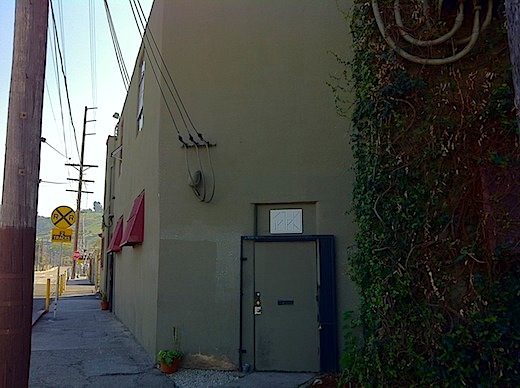
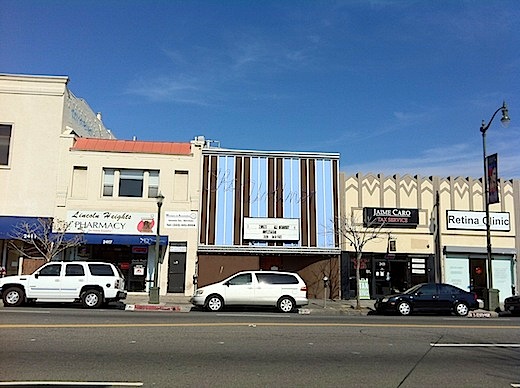


28 thoughts on “California Fool’s Gold — Exploring Lincoln Heights, The Pueblo’s Bedroom”